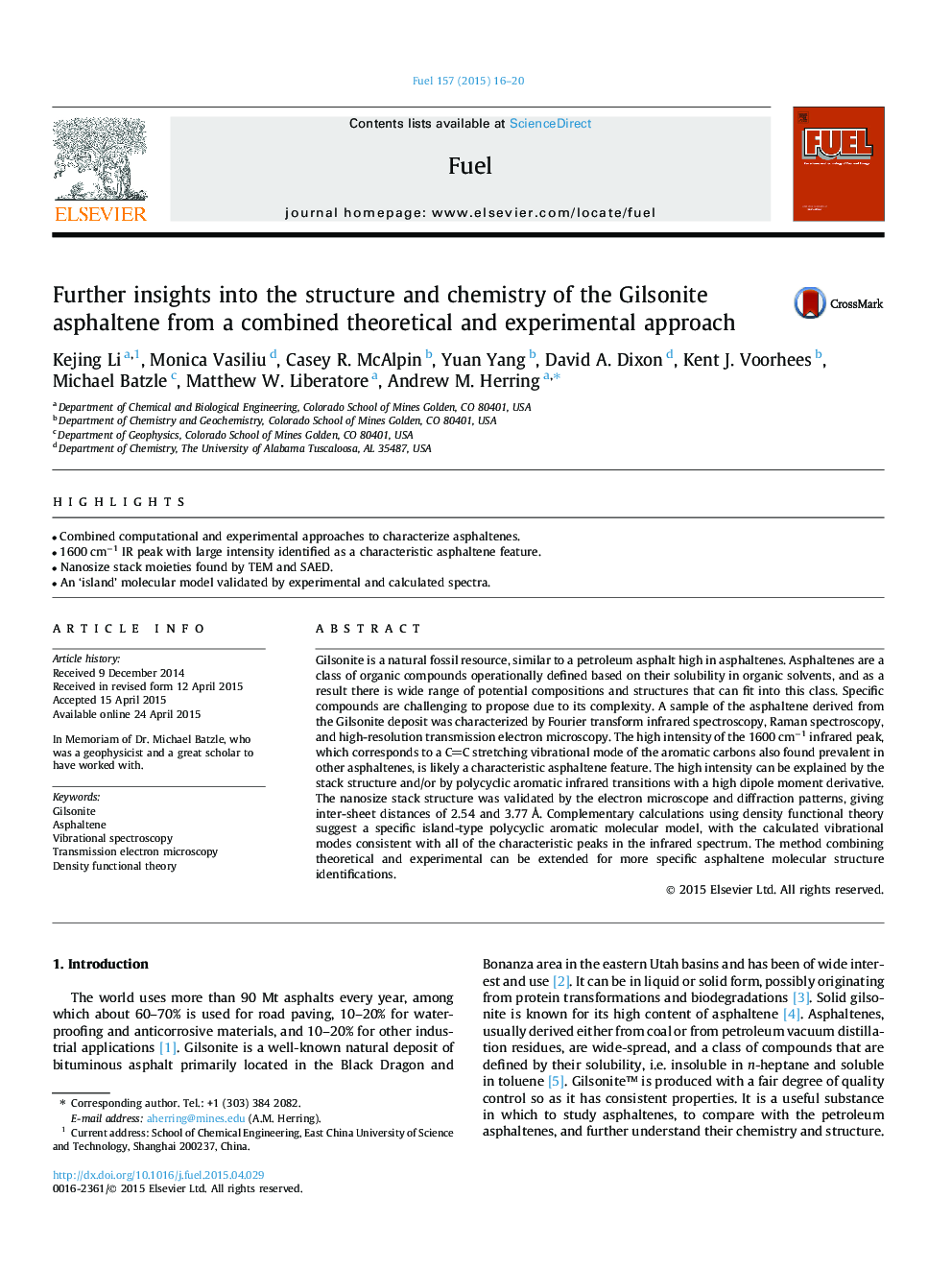| Article ID | Journal | Published Year | Pages | File Type |
|---|---|---|---|---|
| 6635210 | Fuel | 2015 | 5 Pages |
Abstract
Gilsonite is a natural fossil resource, similar to a petroleum asphalt high in asphaltenes. Asphaltenes are a class of organic compounds operationally defined based on their solubility in organic solvents, and as a result there is wide range of potential compositions and structures that can fit into this class. Specific compounds are challenging to propose due to its complexity. A sample of the asphaltene derived from the Gilsonite deposit was characterized by Fourier transform infrared spectroscopy, Raman spectroscopy, and high-resolution transmission electron microscopy. The high intensity of the 1600Â cmâ1 infrared peak, which corresponds to a CC stretching vibrational mode of the aromatic carbons also found prevalent in other asphaltenes, is likely a characteristic asphaltene feature. The high intensity can be explained by the stack structure and/or by polycyclic aromatic infrared transitions with a high dipole moment derivative. The nanosize stack structure was validated by the electron microscope and diffraction patterns, giving inter-sheet distances of 2.54 and 3.77Â Ã
. Complementary calculations using density functional theory suggest a specific island-type polycyclic aromatic molecular model, with the calculated vibrational modes consistent with all of the characteristic peaks in the infrared spectrum. The method combining theoretical and experimental can be extended for more specific asphaltene molecular structure identifications.
Keywords
Related Topics
Physical Sciences and Engineering
Chemical Engineering
Chemical Engineering (General)
Authors
Kejing Li, Monica Vasiliu, Casey R. McAlpin, Yuan Yang, David A. Dixon, Kent J. Voorhees, Michael Batzle, Matthew W. Liberatore, Andrew M. Herring,
